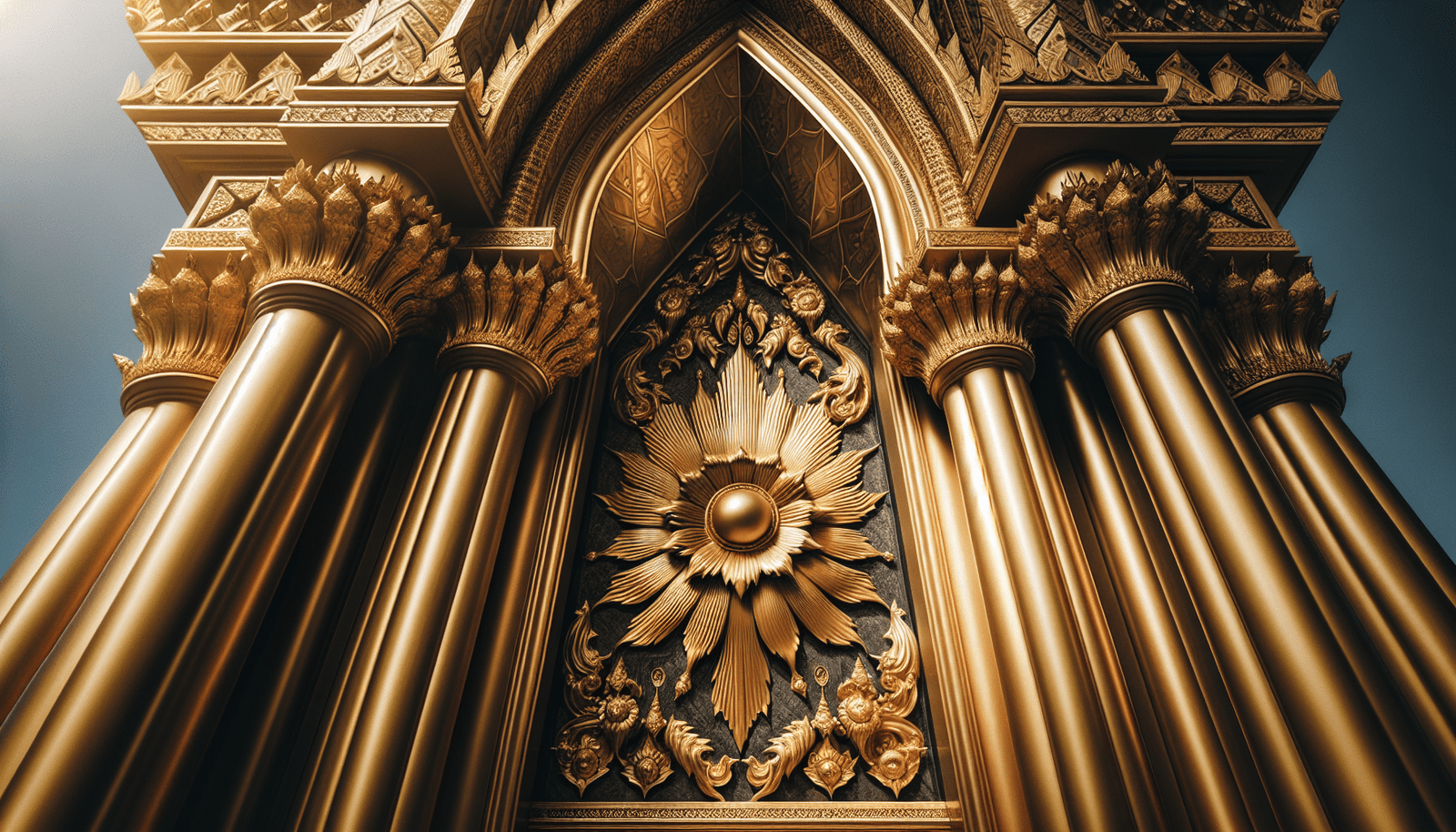The Significance of Gold in Sacred Architecture
Have you ever wondered why gold is such a prevalent material in sacred architecture across different cultures and religions? Let’s explore the importance and symbolism of gold in various religious buildings and structures.

The History of Gold in Sacred Architecture
Gold has been associated with divinity and spirituality for centuries, dating back to ancient civilizations such as the Egyptians, Greeks, and Romans. Its rarity and beauty made it a symbol of power, wealth, and immortality, making it the perfect material for religious structures.
From the golden mask of Tutankhamun in ancient Egypt to the gilded domes of Russian Orthodox cathedrals, gold has always been a prominent element in sacred architecture. Its shimmering presence reflects the divine light and elevates the spiritual experience of those who enter these sacred spaces.
Symbolism of Gold in Religious Buildings
In many religions, gold symbolizes purity, enlightenment, and the divine presence. It is often used to adorn altars, sculptures, and decorations to honor the gods and create a sense of awe and reverence among worshipers.
The use of gold in religious buildings isn’t just about aesthetics; it holds deep symbolic meaning. The radiant golden light is believed to symbolize the presence of the divine and elevate the spiritual experience of those who visit these sacred spaces.
Examples of Gold in Sacred Architecture
Let’s take a closer look at some famous religious buildings around the world that prominently feature gold in their architecture:
| Building | Location | Description |
|---|---|---|
| The Golden Temple | Amritsar, India | Covered in gold leaf and surrounded by a sacred pool, the Golden Temple is a Sikh shrine |
| The Golden Pagoda | Yangon, Myanmar | Also known as the Shwedagon Pagoda, this Buddhist stupa is covered in gold and jewels |
| St. Peter’s Basilica | Vatican City | The largest church in the world, St. Peter’s Basilica features elaborate gold decorations |
| The Golden Mosque | Kuala Lumpur, Malaysia | The mosque’s domes and minarets are plated in gold, creating a striking sight |
| The Golden Pavilion | Kyoto, Japan | Known as Kinkaku-ji in Japanese, this Zen Buddhist temple is covered in gold leaf |
These magnificent structures showcase the use of gold in sacred architecture and highlight its significance in religious symbolism.
Techniques for Incorporating Gold in Architecture
The use of gold in sacred architecture requires special techniques to achieve the desired effect. Here are some common methods used to incorporate gold into buildings and structures:
Gold Leafing
Gold leafing is a traditional method of applying thin sheets of gold to surfaces using a special adhesive. This technique is often used to create intricate designs and decorations on religious buildings, adding a touch of luxury and grandeur to the architecture.
Gilding
Gilding involves applying a thin layer of gold paint or powder to surfaces to create a golden finish. This technique is commonly used to highlight architectural details, sculptures, and ornaments in religious buildings, creating a dazzling effect that catches the light.
Gold Mosaics
Gold mosaics consist of small pieces of gold tiles or glass arranged to create intricate patterns and designs. This technique is often used to decorate walls, ceilings, and domes in religious buildings, adding a sense of opulence and magnificence to the architecture.
By employing these techniques, architects and craftsmen can effectively incorporate gold into sacred architecture, enhancing the spiritual significance and visual impact of religious buildings.

The Spiritual and Emotional Impact of Gold in Sacred Spaces
The presence of gold in sacred architecture is not just about aesthetics or symbolism; it also has a profound spiritual and emotional impact on those who enter these spaces. The shimmering gold surfaces and decorations create a sense of transcendence and awe, elevating the spiritual experience of worshipers.
When light hits the golden surfaces, it reflects and refracts, creating a warm and radiant glow that envelops the space. This golden light is believed to symbolize the divine presence and illuminate the spiritual journey of those who visit these sacred buildings.
The combination of gold’s beauty, rarity, and symbolism in sacred architecture creates a sense of reverence and sacredness among worshipers. The sight of gilded altars, icons, and decorations inspires awe and devotion, fostering a deeper connection to the divine and the spiritual realm.
Conclusion
As we have seen, gold plays a significant role in sacred architecture, serving as a symbol of divinity, purity, and enlightenment. Its shimmering presence in religious buildings around the world elevates the spiritual experience of worshipers and creates a sense of awe and reverence.
Whether it’s gilding, gold leafing, or gold mosaics, the use of gold in architecture requires special techniques to achieve the desired effect. By incorporating gold into religious buildings, architects and craftsmen create spaces that exude grandeur, opulence, and spirituality, enriching the spiritual lives of those who visit these sacred structures.
Next time you visit a religious building adorned with gold, take a moment to appreciate the beauty and symbolism of this precious metal in sacred architecture. Its radiant presence is a reminder of the divine light that shines within us all.
